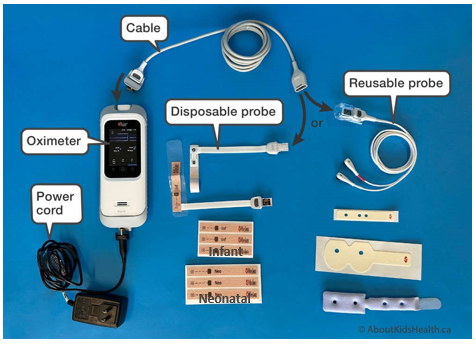ALERT: How to recognize early signs of sepsis and what actions to take?
Connected Care Quick Hits are up to date and evidence based recommendations for the care of children with medical complexity & technology dependence, from hospital to home.
ALERT: How to recognize early signs of sepsis and what actions to take?
SITUATION:
This QuickHit was informed by a Connected Care Live consult from a Community/Home Care Provider seeking assistance with the assessment of a child, who was later diagnosed with sepsis.
BACKGROUND:
Sepsis is a serious and life-threatening condition that occurs when a local infection spreads systemically to the entire body. Sepsis is a significant cause of morbidity and mortality in children. Quickly recognizing and responding to suspected sepsis leads to improved survival outcomes.
Sepsis is most often caused by bacteria but can be caused by other organisms. If a local infection (skin, urinary tract, lungs) enters the bloodstream, the infection can spread throughout the body causing the immune system to release antibodies to fight the infection. This inflammatory response leads to tissue damage and interferes with blood flow. The change in blood flow can lead to a dangerous drop in blood pressure, which stops oxygen from reaching the body’s organs and tissues. This can lead to shock, multi-organ failure and death if not treated
ASSESSMENT:
Early recognition of sepsis is important to ensure immediate treatment. Common signs and symptoms of sepsis to assess for include the following:
Increased or decreased heart rate
Increased respiratory rate (tachypnea) or respiratory distress
Temperature abnormality (<36°C or >38°C)
Low blood pressure (hypotension)
Cool or clammy skin
Pale/pallor and/or decreased capillary refill
Difficulty waking, excessive sleepiness or confusion
Decreased urine output
Sepsis can affect any child, and children that meet the following criteria are at even higher risk:
Chronic illness or medical complexity
Recent surgery or open wound trauma
Immunocompromised, immunodeficiency (e.g. oncology or transplant patients)
Indwelling medical devices (e.g. CVADs, catheters, tubes and stents)
Asplenia, Sickle Cell Disease
Some genetic disorders associated with immune defect (e.g. Trisomy 21)
Neurological or communication impairment
Age <3 months
RECOMMENDATION:
Connected Care recommends frequent assessment for signs and symptoms of sepsis for all children, especially those with suspected or confirmed infections or with known risk factors.
In addition to assessing for the signs and symptoms of sepsis listed above, we recommend consistently utilizing the Paediatric Assessment Triangle to enable rapid assessment of a child's clinical status.
Using the Caring Safely STAR tool is encouraged:
STOP: Does the child have signs of clinical deterioration? What are the child’s worrisome symptoms?
THINK: Could this child have sepsis? Consider if they are at high risk? If their signs and symptoms include those associated with sepsis?
ACT: Get help! Partner with the child’s family caregivers and/or escalate care immediately. Say “I am concerned this child may have sepsis”. Take the child to the nearest emergency department or call 911 if needed.
REVIEW: Pending resolution of symptoms or waiting for medical assistance, continuously assess the child’s status, including repeating the PAT for assessment of appearance, circulation, breathing. Obtain a blood pressure if possible.
For more information about the identification and treatment of sepsis, click here to visit AboutKidsHealth















